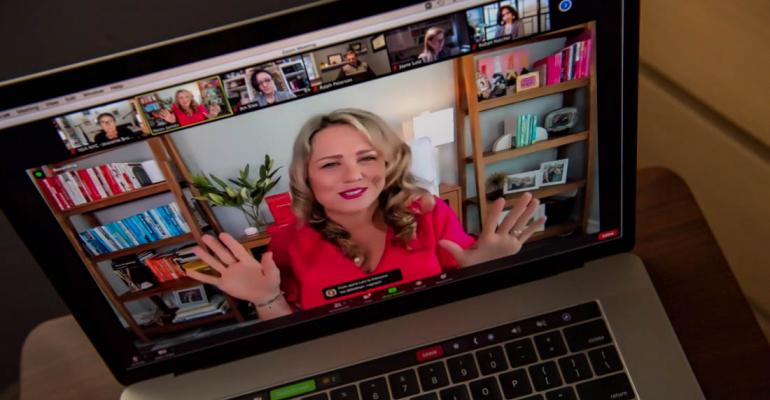Have you ever...
...had an online panel moderator who liked the sound of his own voice a little too much?
...sat through a virtual event where one panelist hogged the camera time and other guests rarely had a chance to speak?
...watched as the audience filled the chat with irrelevant questions?
A great panel moderator can prevent all of that, but it takes specific skills and processes to succeed in the online environment. Planners should focus on finding a moderator who has experience in engagement—using online tools for educating, entertaining, and interacting with an audience. Then, have the moderator follow this BDA (before, during, and after) process so everyone is on the same page and is prepared for a successful event.
Before the Event
• Create bullet points for discussion and share them with your panelists.
• Organize a video conference call so the speakers can connect and get familiar with the platform. This allows you to see each person’s virtual set-up for the event.
• Make sure everyone has strong Wi-Fi, a landline, or cell phone to connect in case Wi-Fi doesn’t work, a quality microphone, and great lighting. Ideally, the panelists will wear a headset for better sound. Remind them to silence their cell phones and mute email notifications on their computer during the event.
• Collect photos, social-media information, and short biographies of the speakers to share with the audience.
• Provide three questions to the panel in advance to help them prepare short answers.
• Keep all questions contextual so panelists can be flexible in their responses.
• Prepare case studies and examples you can add to complement panelists’ comments.
• Determine the social-media strategy: What hashtag are you using? Who will manage questions that come in from the audience?
• Determine speaking order; begin with a strong panelist.
• Remind panelists to focus their responses to benefit the specific audience and to keep their answers shorter in virtual than they would in person.
During the Panel
• If the technology platform allows it, encourage everyone to turn on their video cameras, which will drive engagement for both the speakers and attendees.
• Advise the audience that you will be monitoring the chat and would love to engage them in the conversation.
• Start with something that gets attendees to lean into the topic. “A simple tactic is to take an online poll so that you and the panelists can focus attention on what really matters to the audience,” suggests Kristin Arnold, a certified professional facilitator.
• Make the first question an easy one to allow the audience to get to know your panelists.
• When asking a question, direct your attention to the panelist by using his or her name.
• Share the panelists’ contact information, social-media profiles, and conference hashtag in the chat so people can easily connect and tag them.
• Encourage the audience to share learnings from the panel on their social channels, take screenshots, and use the designated hashtag if you have one.
Manage the Panel
• Keep questions contextual—don’t let speakers stray off topic.
• Shut down any sales pitches.
• Provide a variety of good and bad examples or case studies (not just success stories).
• Allow panelists to complement each other’s responses and to debate, but interrupt stage hogs to keep the conversation balanced.
• Remind them to use one another’s names, which is more important for virtual panels than in-person events.
Manage the Audience
• If the virtual-event platform has a chat function, ask the audience to post questions in the chat so everyone will benefit and you’ll have a record of what was asked.
• Repeat each question from audience members for the benefit of online attendees and panelists.
• If the technology allows it, encourage attendees to unmute to provide more context or information about their questions if necessary.
After the Panel
• Share panelists’ contact information with attendees in a follow-up email. Also encourage them to connect with the speakers on social media
• If the panel approves, share a recording of the session with the audience.
• Send thank-you notes or emails to the panelists.
Neen James, author of Folding Time and Attention Pays, is a high-energy sales and leadership expert. She has been named one of the Top 30 Leadership Speakers by Global Guru several years in a row. For more ideas on how to keep an audience’s attention in the virtual world, check her blog.





